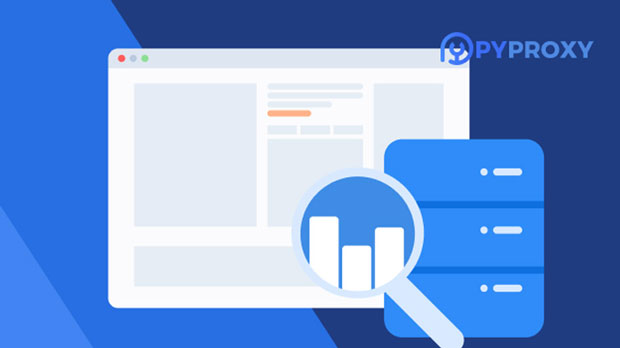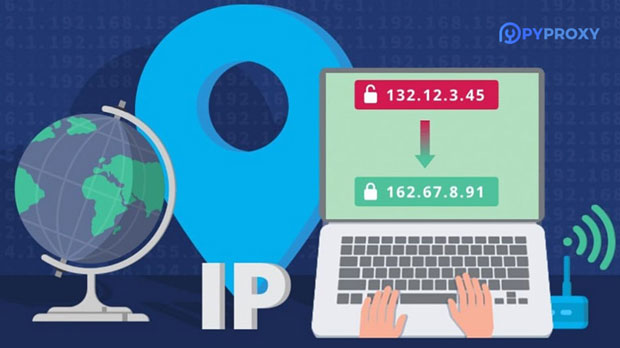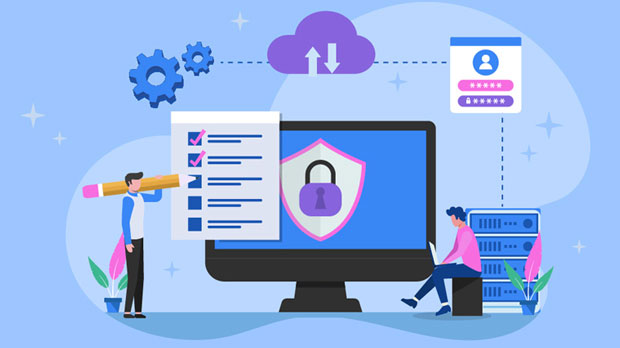PYPROXY provides high quality proxy server services
In today's rapidly evolving digital landscape, maintaining security, privacy, and access control is more critical than ever. For individuals and businesses seeking to navigate the complexities of online traffic management, proxy servers have become indispensable. A reliable proxy server acts as an intermediary between users and the internet, offering a variety of benefits such as enhanced security, better performance, and seamless access to restricted content. This article delves into the high-quality proxy server services that are essential for modern digital operations, exploring their benefits, features, and the reasons why investing in robust proxy solutions is crucial for businesses and individuals alike. What Are Proxy Servers and How Do They Work?A proxy server is a server that sits between a client (such as a user’s computer or device) and a destination server (such as a website or online service). It acts as a gateway through which requests are sent and received, thereby masking the user’s original IP address. The proxy server processes requests on behalf of the client, sending the information to the target server while concealing the user's identity. Once the target server responds, the proxy server forwards the response back to the user.The main function of a proxy server is to ensure that the client’s network traffic is routed through an intermediary point, enhancing privacy, security, and access management. By using a proxy, users can hide their true IP addresses, bypass geographic restrictions, improve browsing speed, and gain access to blocked or restricted content.The Benefits of Using High-Quality Proxy Servers1. Enhanced SecurityThe primary reason businesses and individuals opt for high-quality proxy server services is to boost their security. A proxy server helps to shield users from malicious sites, cyber threats, and hackers by acting as a protective barrier between the client and the internet. Proxy servers often include additional layers of security, such as encryption, which ensures that sensitive data, such as login credentials and financial transactions, are not intercepted during transmission.For businesses, the risk of cyber-attacks is a real concern. By deploying secure proxy servers, they can mitigate these risks and safeguard valuable corporate data. This is particularly critical in industries dealing with sensitive information, such as finance, healthcare, and e-commerce.2. Improved Privacy and AnonymityA major advantage of using proxy servers is the anonymity they provide. Since a proxy server masks the user’s original IP address, it becomes difficult for third-party entities to track the user’s online activities. This feature is invaluable for those who wish to maintain their privacy while browsing the internet.In addition to hiding IP addresses, proxy servers also provide a high level of encryption for users' internet traffic. This makes it significantly harder for hackers, governments, or advertisers to monitor or track user behavior. As online privacy concerns grow, proxies offer an effective way to maintain confidentiality and protect personal information.3. Access to Geo-Restricted ContentOne of the most popular uses of proxy servers is bypassing geographical restrictions on content. Many online services, such as streaming platforms, restrict access to their content based on the user’s location. With a proxy server, users can appear as if they are accessing the internet from a different location, enabling them to access content that is otherwise unavailable in their region.For businesses with a global clientele, proxies can ensure that users from different parts of the world can access the website or application without any issues. This is particularly important for streaming services, news outlets, and e-commerce platforms that need to provide a localized experience while maintaining a global reach.4. Enhanced Browsing Speed and Bandwidth SavingsProxy servers can significantly improve browsing performance. By caching frequently requested resources, proxies reduce the load on the destination server and decrease the amount of data that needs to be retrieved from the internet. This results in faster load times and a smoother browsing experience for users.Additionally, proxies can reduce bandwidth usage by filtering out unnecessary data, such as ads and large media files. For businesses with limited bandwidth, this can result in substantial cost savings. Moreover, proxy servers can help to optimize traffic management and ensure that bandwidth is used more efficiently.5. Load Balancing and Traffic ManagementFor businesses, maintaining consistent performance and uptime is critical. Proxy servers can provide load balancing capabilities, ensuring that web traffic is distributed evenly across multiple servers. This prevents server overload, reduces downtime, and improves the overall user experience.In addition to load balancing, proxies can also manage traffic by prioritizing certain types of data or user requests. This allows businesses to allocate resources more effectively, ensuring that mission-critical operations receive the necessary bandwidth and attention.Types of Proxy Servers and Their ApplicationsThere are several types of proxy servers, each suited for different needs and applications. Understanding the different types of proxies is essential for selecting the right solution.1. HTTP ProxyAn HTTP proxy handles web traffic and is primarily used for browsing the internet. It operates at the application layer and only supports HTTP requests. This type of proxy is ideal for users who need to access websites anonymously or bypass content filters.2. SOCKS ProxySOCKS proxies are more versatile than HTTP proxies and can handle any type of traffic, including web browsing, email, and even file transfers. SOCKS proxies work at a lower layer of the OSI model, making them suitable for a wide range of applications, including gaming, file sharing, and torrenting.3. residential proxy residential proxies are typically used by businesses or individuals who need to scrape websites, gather data, or conduct market research without being detected. These proxies use IP addresses assigned to actual devices, making them harder to block or identify as proxies. Residential proxies are ideal for web scraping, SEO monitoring, and ad verification.4. Dedicated ProxyDedicated proxies are private proxies that are exclusively used by a single user or business. These proxies provide a higher level of performance, privacy, and security compared to shared proxies, making them suitable for users with specific and demanding requirements.How to Choose the Right Proxy Server ServiceWhen selecting a high-quality proxy server service, it is important to consider several factors:- Performance: Ensure that the proxy service offers reliable and fast speeds to maintain a smooth browsing experience.- Security: Look for proxies that provide robust security features, such as encryption and secure protocols.- Support: Choose a service with excellent customer support to assist with any issues or concerns.- Scalability: If you are running a business, ensure that the proxy service can scale to accommodate your growing needs.- Location: Choose a service that offers proxies from locations relevant to your business or content access requirements.ConclusionIn conclusion, high-quality proxy server services provide numerous benefits for individuals and businesses. Whether you're seeking enhanced privacy, improved security, faster browsing speeds, or the ability to bypass geo-restrictions, proxies offer versatile solutions to meet these needs. With the increasing demand for secure and efficient online interactions, investing in reliable proxy services has become a strategic decision for anyone looking to navigate the complexities of the digital world with ease and confidence. By understanding the various types of proxies and their applications, users can make informed decisions to select the best service for their specific needs, ensuring they maximize the value of their online experiences.
2025-02-18

























































